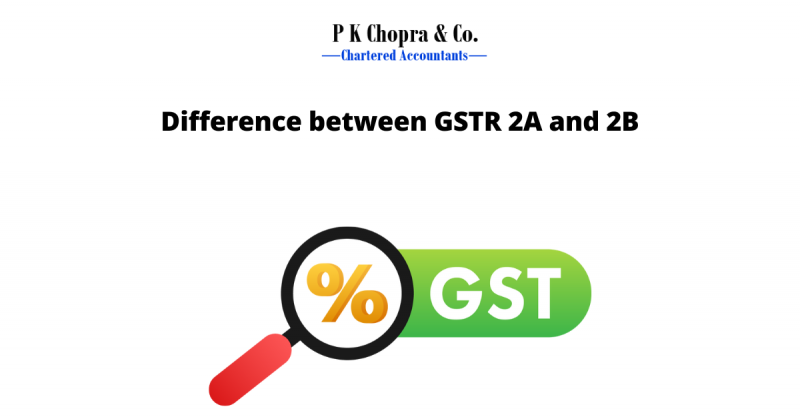Difference between GSTR 2A and 2B
It’s a fact that the implementation of Goods & Service Tax (GST) will result in a significant rise in compliance, which is required to incorporate all indirect tax systems of India. As of now, it is the GST portal contains a total of twenty-two kinds of GST Returns (GSTR) that fall under eight of them and are auto-populated. In order to narrow this huge topic this discussion will be solely focused on two types of returns, i.e., 2A and 2B, both of which are only accessible to the public. In the beginning, a brief description of both returns will be provided in order to highlight their importance in tax analysis. In the next section, we will discuss the key points that distinguish the two GSTRs and provide an in-depth comparison of the two. Finally, end this essay by linking the two GSTRs by highlighting their differences.
Introduction of GSTR 2A & 2B
To ease the indirect taxation system, India introduced the GST law in the year 2017. In line with its primary purpose In February. 2019 GSTR-2A was introduced on the GST portal using the automatic generation feature. Based on the information provided in GSTR-1. GSTR-2A shows information from both the original and amended invoices. These are evident proof of the eligibility for input tax Credit (ITC).
In order to move in the direction of the new return i.e., GSTR-2B was implemented in Aug. 2021. The new return, which became into effect in September. 2021. It simplifies the calculation process and reduces the potential ITC on behalf of the Assessee (Taxpayer). The principal goal behind implementing the change is to guarantee that the value is constant throughout the entire period without any issues with the original report, i.e., GSTR-2A. This new return provides convenience to Assessee in claiming their legally valid ITC without requiring an unnecessary explanation on the part of the department.
Differentiation between GSTR-2A & 2B
The main difference between the two siblings’ yields (GSTR-2A and GSTR-2B) is easily identified with an easy comparability study. In the discussion that began it is evident that both returns are a reflection of the accessibility of ITC however the real mystery lies in the process of determining the evaluation of the transitional nature. It is possible to clarify this by examining these bullets:
- Type of data GSTR-2A is dynamic because it records information about supplies inward (sale) in a daily basis, based on information submitted through the Invoice Furnishing Facility (IFF) which is entered in GSTR-1. This means that GSTR-2A is updated every month, as the assessee or supplier submits the most recent data uploaded. With this in mind GSTR-2B begins by displaying the same data statically by generating data for a specific month. The return will then select particulars in relation to the due dates for either GSTR-1 or IFF of the following month. This makes GSTR-2B an unchanging monthly model that is consistent, without the involvement of the future processes of uploading data.
- The Scope GSTR-2B is an improved version of GSTR-2A. It’s details are confined and do not declare specifics like the Tax Deduction At Source (TDS) or the Tax Collection At Source (TCS). It does, however, reflect import transactions that originate outside of India or within the Special Economic Zone (SEZ).
- data bifurcation: Reflecting the details of ITC GSTR-2A is not equipped with this feature of bifurcating eligible and ineligible ITC this has been addressed in the latest return, i.e. GSTR-2B.
- Reconciliation after making GSTR-1 submission, Assessee must submit GSTR-3B which is a monthly self-declaratory consolidated summary statement in which all transactions are reconciled to ITC claims as well as tax liability details. Since this new GSTR-3B the details of ITC that are eligible ITC have generated automatically in GSTR-3B. This wasn’t the case for GSTR-2A.
Conclusion
With different highlights above it is important to be aware that both are auto-generated monthly returns, and are interconnected since GSTR-2B is the filter variant of GSTR-2A. The introduction of a brand new return model, i.e. GSTR-2B will eliminate a lot of confusion, such as static ITC details as well as the division between eligible and ineligible ITC. In the event, however, given the history of litigation and confusion and litigation, this new return system could cause new confusion as the department next year is formed, and Assessee will come up with different views on the issue of claiming ITC. Every initiative is a solution to old issues , but it also causes certain problems or confusion.

